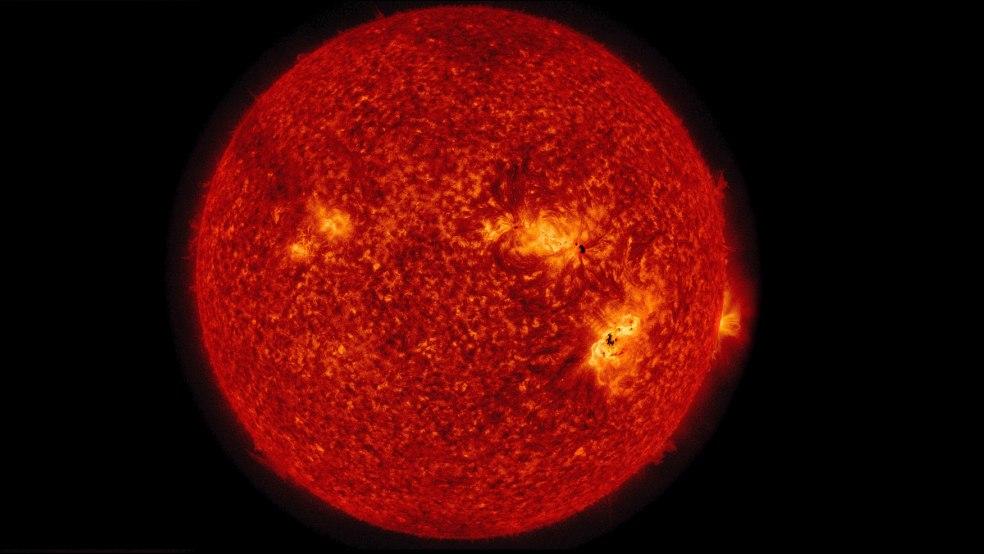In 1859, a British astronomer named Richard C. Carrington observed a large solar flare. The next day, auroras were seen in the tropics and telegraph systems all over the world malfunctioned, shocking their operators and lighting telegraph paper on fire, according to a recent report published by the Federation of American Scientists.
The author of the report, Robert Coker, a former aerospace engineer for NASA Marshall Space Flight Center, says solar flares are known to cause geomagnetic disturbances that have detrimental effects on satellite operations, GPS systems, high-frequency airplane communications and the electrical power grid.
Coker calls sun flares and other electromagnetic disruptions space weather events. Minor events occur almost yearly, he says, resulting in GPS disruptions and rerouting of aircraft. More significant events occur once a decade, with extended local outages. But an event like the Carrington solar storm might occur once a century – and we're due for a hit.
The 20th century did suffer major storms. The first was in May 1921, when the damage was limited to telegraph stations and underwater cables. The second, in 1989, had a more significant impact.
Dr. Sten Odenwald, a NASA astronomer, reported, "Within minutes, tangled magnetic forces on the sun had released a billion-ton cloud of gas. It was like the energy of thousands of nuclear bombs exploding at the same time. The storm cloud rushed out from the sun, straight towards Earth, at a million miles an hour. The solar flare that accompanied the outburst immediately caused short-wave radio interference, including the jamming of radio signals from Radio Free Europe into Russia. It was thought that the signals had been jammed by the Kremlin, but it was only the sun acting up!" The event caused a blackout that affected 6 million people in the province of Quebec, lasting nine hours.
Think back to 1989 – most of us still hadn’t even heard of the internet. Imagine what would happen to today if a solar event shut down the web, online trading, the power grid itself. If the solar disruption came close to the size of the Carrington event, it could cripple aviation and the electronics in the cars we drive every day.
Even more worrying, this entire calamity could take place without warning, and the effects could last for months or even years, at a cost of more than $1 trillion, Coker says.
By now, you're probably thinking this sounds like a bad script for another Bruce Willis disaster film. Before you reach for your Xanax, there is hope that a consortium of global scientists, academicians, and industry leaders have developed a National Space Weather Strategy and Space Weather Action Plan that can mitigate the effects of a major solar storm.
Let’s just hope they don’t follow the sun.


